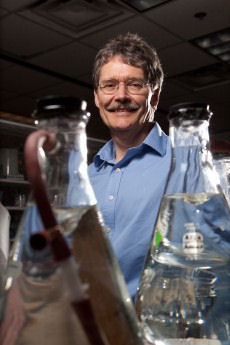
A big step towards viable biofuel refining was taken this week, with scientists claiming to have directly converted the natural sugars in plant matter into a promising surrogate for petroleum-based chemicals.
The faux fossil fuel is hydroxymethylfurfural (HMF), which the researchers say can be derived from glucose and fructose. Importantly, the HMF from glucose contains very little of the residual impurities that have made the quest for a viable glucose biorefining method so daunting in the past.

The metal chlorides belong to a class of ionic-liquid-soluble materials called halides, which work well for converting fructose to HMF, but less effectively with glucose. Working with a high-throughput reactor capable of testing 96 metal halide catalysts at various temperatures, Zhang discovered that a particular metal – chromium chloride – was by far the most effective at converting glucose to HMF with few impurities and at a low temperature of 100 degrees centigrade.
Zhang speuclates that metal chloride catalysts work during an atom-swapping phase that sugar molecules go through called mutarotation, in which an H (hydrogen) and OH (hydroxyl group) trade places. Zhang explained that during the swap, the molecule opens, which allows a hydride transfer through which glucose is converted to fructose.
Zhang’s next step is to tinker with ionic solvent and metal halide combinations to see if he can increase HMF yield from glucose while reducing separation and purification cost. “The opportunities are endless,” Zhang said, “and the chemistry is starting to get interesting.”
Related articles:
Race On To Increase Biofuel Yields
Study Slams Economics Of Ethanol And Biodiesel
Laughing Gas Levels From Biodiesel Crops Not Funny








Comments are closed.